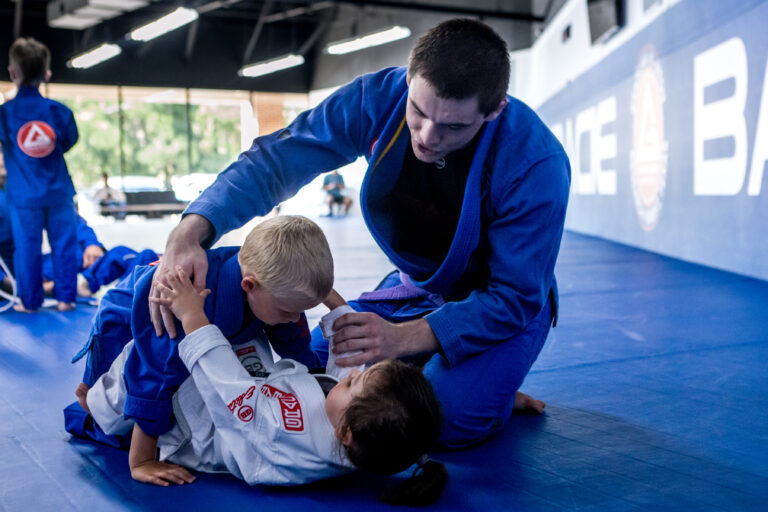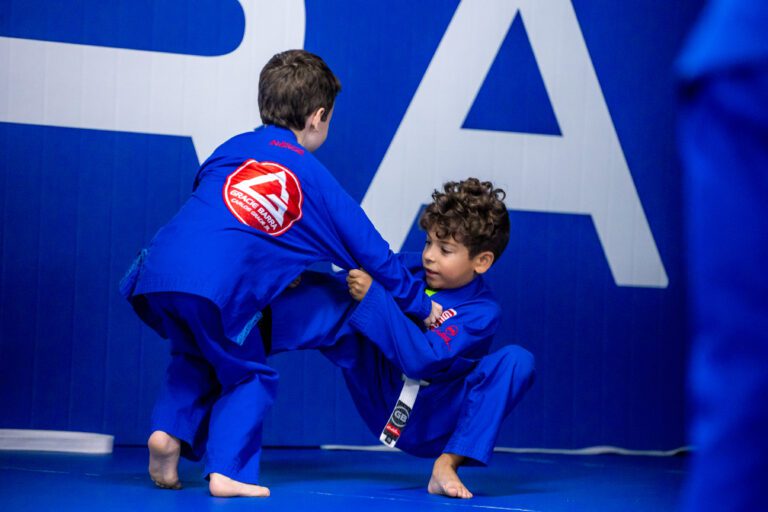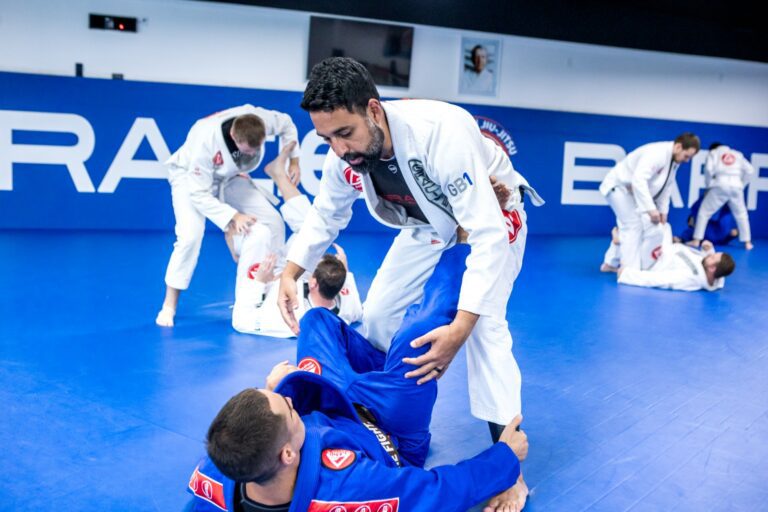Jiu-Jitsu, an ancient martial art originating from Japan, has gained popularity worldwide due to its numerous physical, mental, and emotional benefits. When applied in the context of childhood, Jiu-Jitsu provides a unique platform for the holistic development of children. This article explores the specific benefits that this practice can offer to young practitioners.

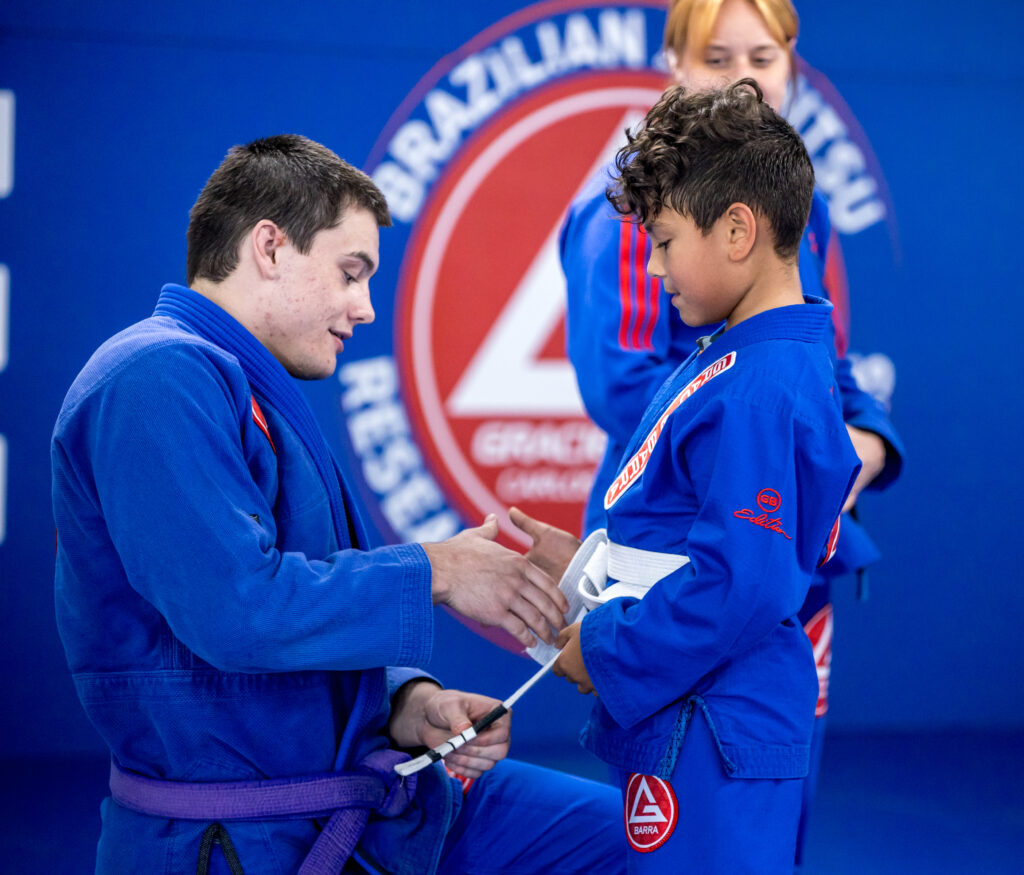
1. Physical Development: The Foundation of Child Health
Jiu-Jitsu is a practice involving dynamic movements, flexibility exercises, and specific techniques that promote holistic physical development in children. Regular engagement in these activities contributes not only to muscle strengthening but also to enhancing fine and gross motor skills. Additionally, the playful nature of Jiu-Jitsu training stimulates agility, cardiovascular endurance, and bone health.
In delving deeper into this section, it is essential to highlight how Jiu-Jitsu training can be adapted for different age groups, respecting each child’s stage of physical development. Including information on the importance of warming up, stretching, and postural care will provide a comprehensive insight into how Jiu-Jitsu contributes to child physical health.
Regular Jiu-Jitsu practice not only strengthens muscles but also improves cardiovascular endurance, crucial for promoting an active and healthy lifestyle. Specifically designed exercises, presented in a playful and engaging manner, not only develop physical strength but also flexibility, laying a solid foundation for the healthy growth of children.
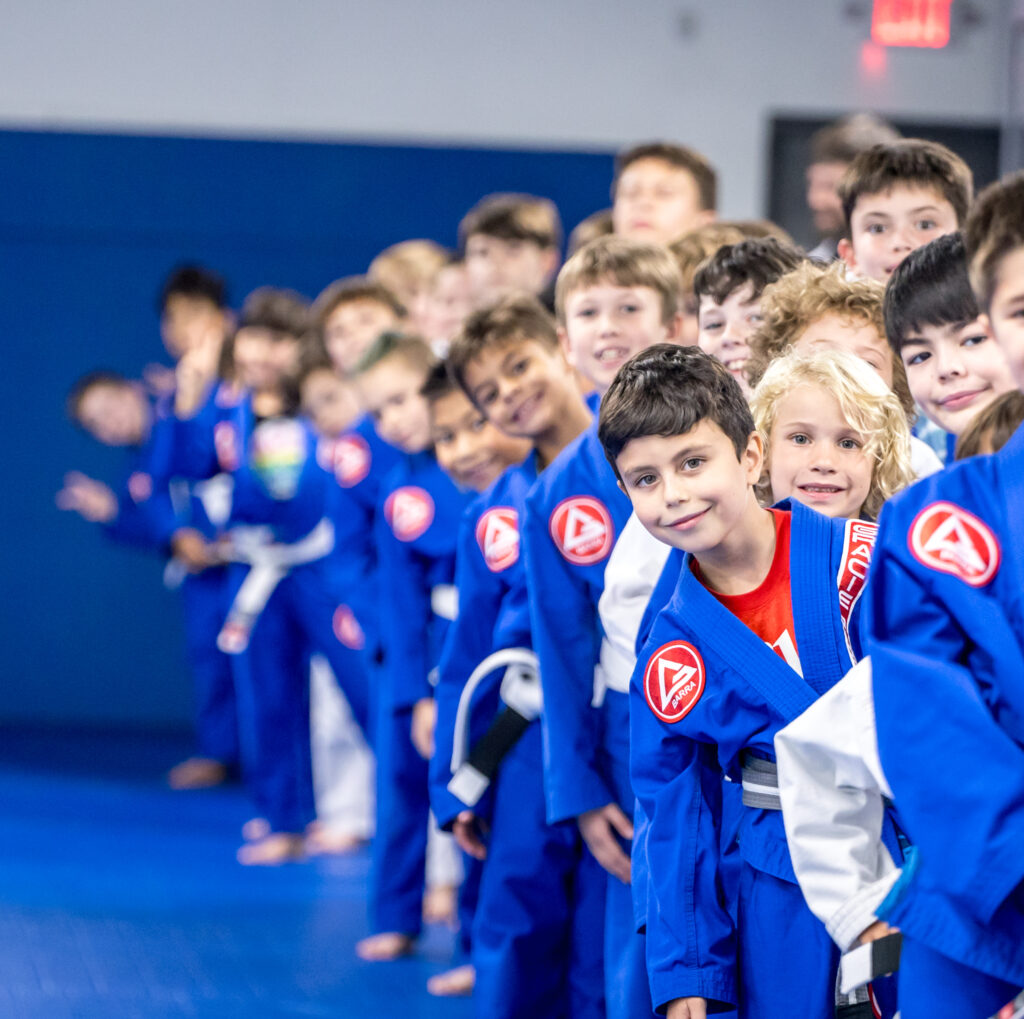
2. Building Self-Confidence: Overcoming Challenges on the Mat
Discipline, persistence, and resilience are fundamental elements in Jiu-Jitsu, and these values play a crucial role in building children’s self-confidence. Facing challenges during training, learning new techniques, and overcoming obstacles contribute to the development of self-esteem and self-confidence. This section can be expanded with practical examples of common challenging situations during training and how overcoming them aids in personal growth.
Exploring specific pedagogical strategies used by instructors to foster resilience in children and the establishment of individual goals within the context of Jiu-Jitsu are additional topics that will enrich readers’ understanding of how this practice shapes not only the body but also the mind and child self-confidence.
Moreover, addressing how the confidence gained on the mat extends to everyday life, positively influencing academic performance and the ability to face social challenges, provides a comprehensive perspective on how Jiu-Jitsu contributes to the holistic formation of children.

3. Social Development: The Art of Interaction and Mutual Respect
Jiu-Jitsu is not just an individual activity; it involves constant interaction with other practitioners. This dynamic fosters the social development of children, teaching crucial communication skills, teamwork, and mutual respect. Exploring how the bonds formed during training can transform into enduring friendships will contribute to understanding the social benefits of this practice.
In addition to basic social interaction skills, it is essential to address more complex aspects, such as leadership, empathy, and cooperation, cultivated in the unique environment provided by Jiu-Jitsu. Discussions on how children learn to deal with success and failure during competitions and the importance of support among training peers can complement this section.
Integrating information about the role of instructors in promoting an inclusive and supportive environment, as well as Jiu-Jitsu as an effective tool against bullying and for promoting diversity, will enrich the analysis of how this martial art contributes to positive social development in children.
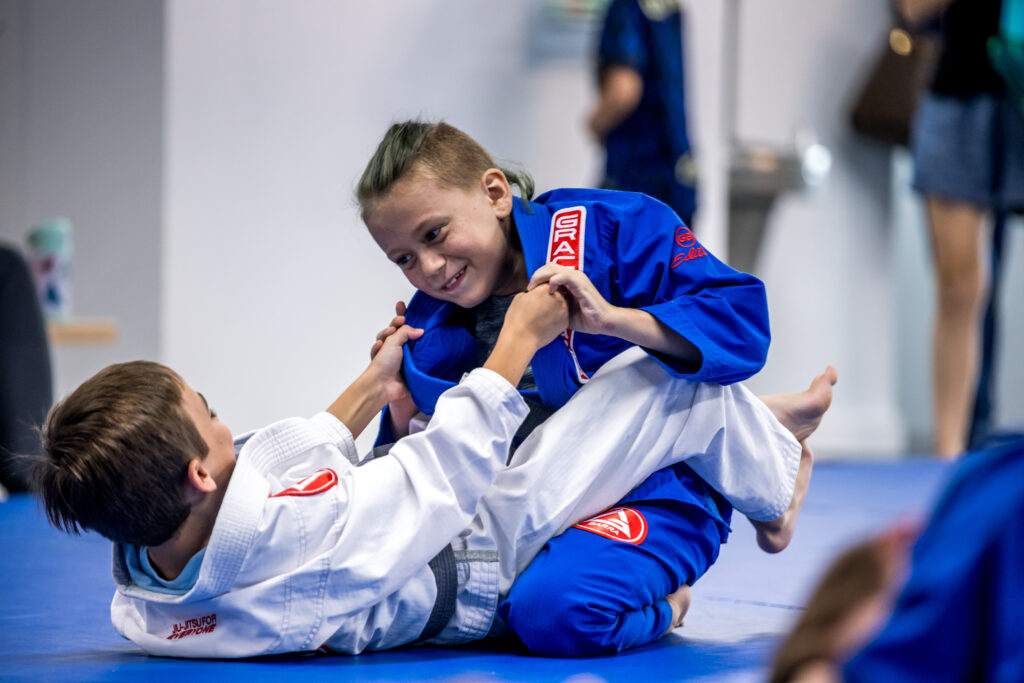
4. Emotional Control: Dealing with Challenges on the Mat and in Life
Jiu-Jitsu is a school for emotional control, teaching children the importance of staying calm in challenging situations. This section can delve into specific strategies used by instructors to address pressure situations and how these skills transfer to daily life. Additionally, we will explore how the development of emotional control in Jiu-Jitsu transcends the mat, positively impacting children’s everyday lives and preparing them to face life’s ups and downs with maturity.
To enhance this section, we can explore specific stories of children who found in Jiu-Jitsu a tool to deal with difficult emotions. We can also include a deeper analysis of how breathing techniques and mindfulness incorporated into training contribute to the development of emotional control.
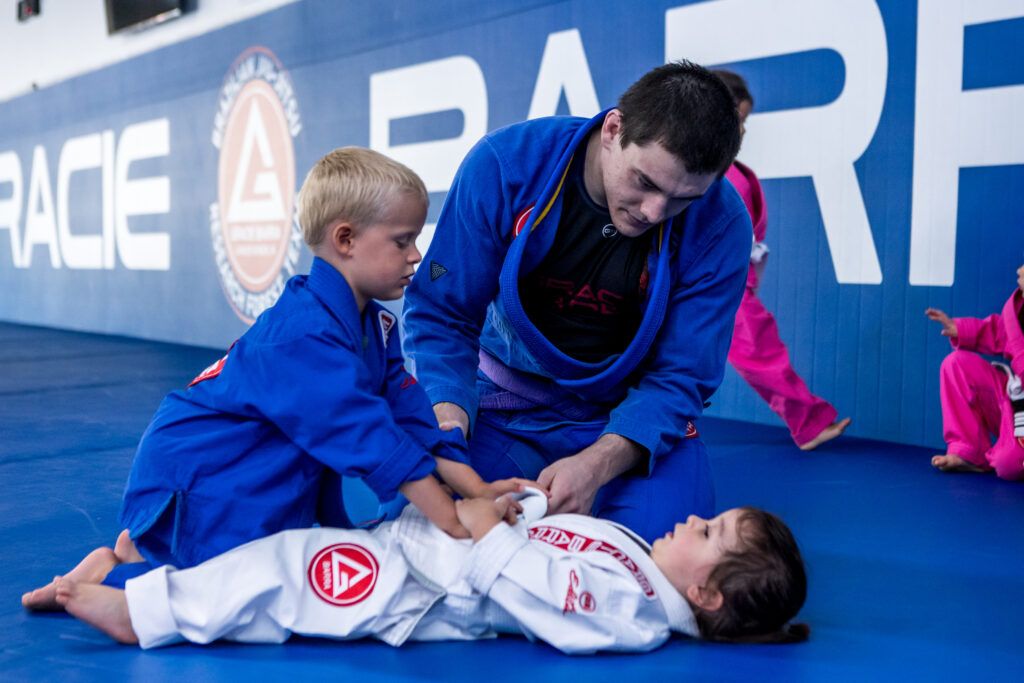
5. Personal Growth and Ethical Values: Forging Conscious Citizens
Jiu-Jitsu goes beyond the mat; it is a school of ethical values. Exploring how regular practice teaches fundamental principles such as respect, humility, discipline, and self-control provides a solid foundation for personal growth. Additionally, this section can address how these values are reflected in children’s attitudes outside the academy, positively influencing their behavior at home, school, and in society.
We can expand this section by including practical examples of how ethical values learned in Jiu-Jitsu manifest in children’s everyday situations. Furthermore, highlighting how these values are essential for the development of conscious and responsible citizens will add depth to the analysis.
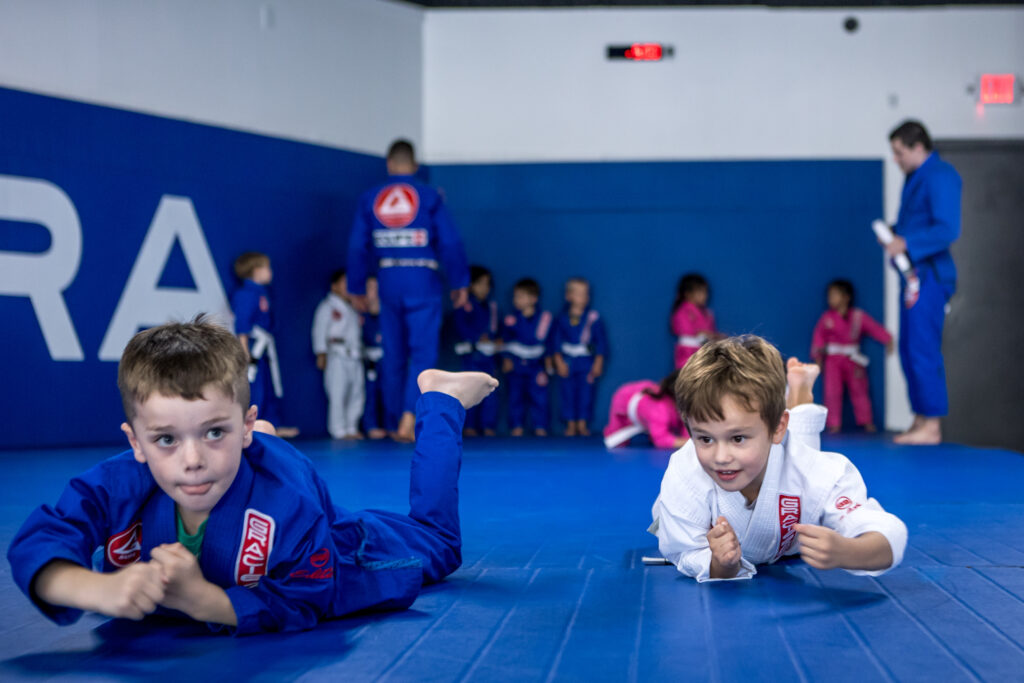
6. Mental Health and Well-Being: The Positive Influence of Jiu-Jitsu
Jiu-Jitsu is not limited to the physical and emotional; it also plays a crucial role in mental health and well-being. Exploring how the practice contributes to stress reduction, anxiety alleviation, and improved concentration can add an additional layer of understanding about the holistic benefits of Jiu-Jitsu. The relationship between Jiu-Jitsu and promoting children’s sleep quality, considering the importance of rest for child development, can also be addressed.
By expanding this section, we can include information about research and studies supporting the positive influence of Jiu-Jitsu on children’s mental health. Interviews with mental health professionals and testimonials from parents and children who have experienced significant improvements in mental well-being after Jiu-Jitsu practice can add credibility and depth to the discussion.
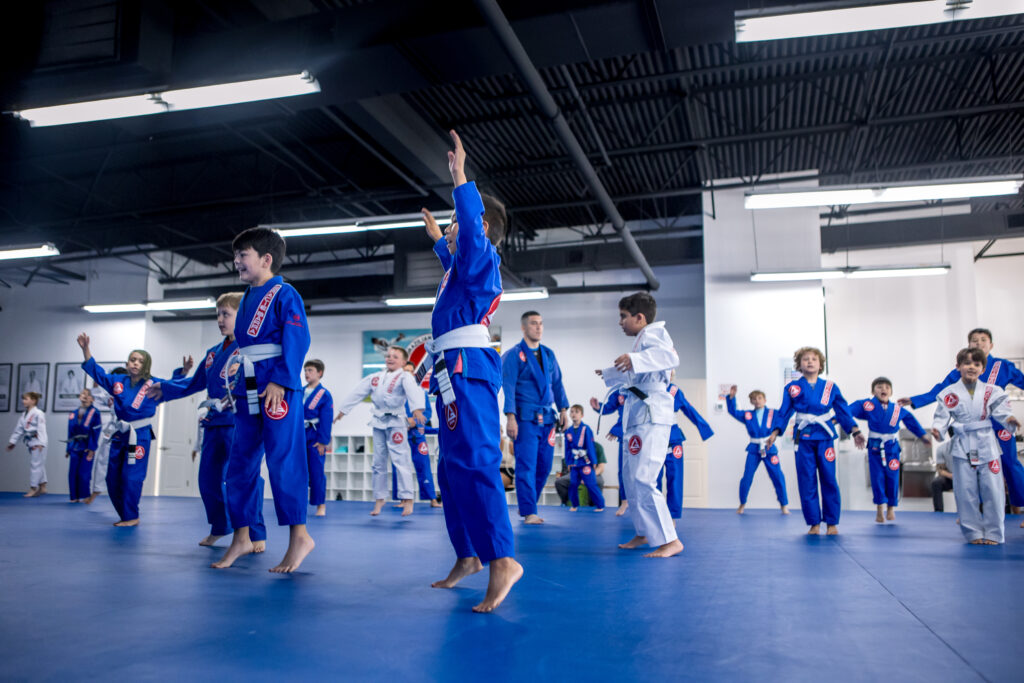
7. Exploration of Related Themes: Broadening Horizons
To further enrich understanding, we will address related topics, such as the influence of Jiu-Jitsu in promoting mental health. We will also examine the fundamental role of parents in supporting children who practice Jiu-Jitsu, providing practical advice on how parents can be involved in and support their children’s development in this martial art. Additionally, we will include interviews with experts and testimonials from parents and children, providing a more comprehensive perspective on the benefits of Jiu-Jitsu.
We will add a section dedicated to the relationship between Jiu-Jitsu and formal education, exploring how principles learned on the mat translate into academic improvements and learning skills. We will analyze studies and research that support these connections, expanding understanding of the impact of Jiu-Jitsu on children’s academic lives.
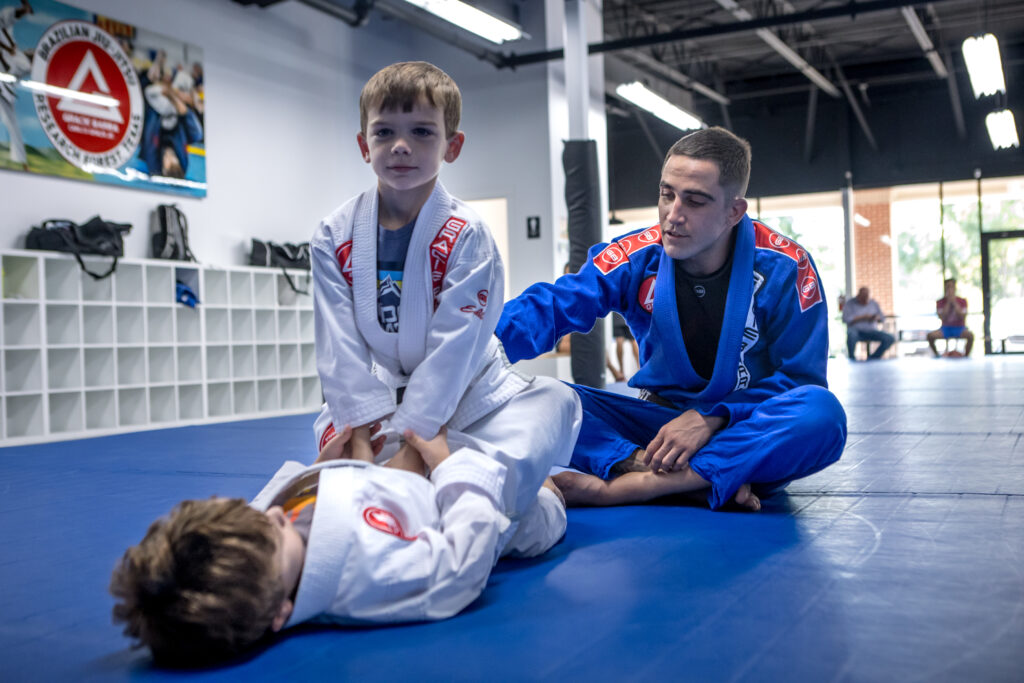
8. Inclusion and Diversity: Building Strong Communities
Jiu-Jitsu, by its nature, is an inclusive practice that welcomes people of different backgrounds, ages, and abilities. This section will explore how the practice of Jiu-Jitsu can contribute to building strong and inclusive communities, promoting diversity on the mat. Discussions about inclusion programs, adaptations for children with special needs, and creating a welcoming environment for all practitioners will add an important dimension to the narrative.
By highlighting success stories of children who found in Jiu-Jitsu a space for inclusion and acceptance, this section will broaden the understanding of how this martial art goes beyond individual development, positively influencing the dynamics of local communities.
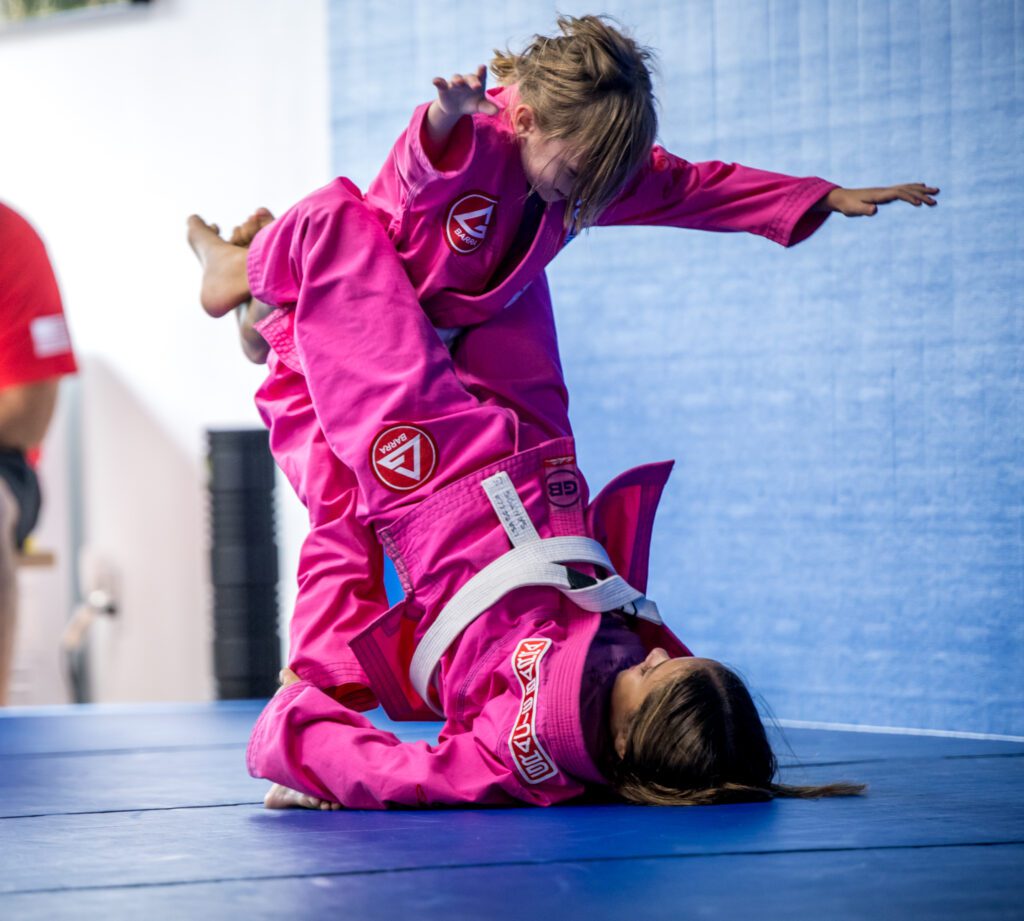
9. Academic Development: The Synergy Between the Mat and the Classroom
Jiu-Jitsu not only strengthens the body but can also have positive impacts on children’s academic development. We will explore the synergy between the mat and the classroom, analyzing how skills learned during training, such as focus, discipline, and resilience, translate into improvements in formal learning. This section will include testimonials from parents, educators, and experts who have observed the positive impact of Jiu-Jitsu on children’s academic performance.
By highlighting studies that explore the relationship between Jiu-Jitsu practice and cognitive development, this section will provide a solid foundation for understanding how physical activity can complement and strengthen children’s academic skills.

11. Development of Empathy and Conflict Resolution: The Importance of Interpersonal Relationships
Jiu-Jitsu, involving constant interactions with other practitioners, provides a conducive environment for the development of empathy and conflict resolution skills. Children learn to understand the perspectives of training partners, deal with different personalities, and resolve interpersonal challenges. These skills extend beyond the mat, contributing to the formation of empathetic individuals capable of constructively handling conflicts in various areas of their lives.

12. Stimulation of Creativity and Personal Expression: Martial Art as a Means of Individual Expression
Jiu-Jitsu is not only a form of physical exercise but also an artistic expression. Exploring how the practice allows children to express their creativity through movements, strategies, and adaptations during training will add an artistic dimension to the Jiu-Jitsu journey. Encouraging creativity not only makes training more engaging but also contributes to the development of an innovative and creative approach in everyday life.
In short:
Brazilian Jiu-Jitsu is not merely a physical exercise but also an art form. Delving into how the practice enables children to express their creativity through movements, strategies, and adaptations during training will add an artistic dimension to the Jiu-Jitsu journey. Stimulating creativity not only makes the training more engaging but also contributes to the development of an innovative and creative approach in everyday life.





